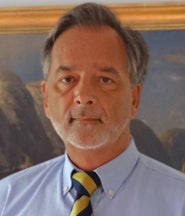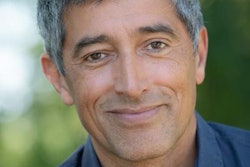
I remember a day in the late 1960s when my father, the head of surgery and traumatology at a Berlin hospital, mentioned at our dinner table at home: "I guess I'll hire a radiologist; we seem to need one." And so it happened. Until that time, the surgeons had performed and read their x-ray exams themselves. Still, the surgeons had the final say. The radiologist performed an "ancillary" service. (Incidentally, at one of my first Latin lessons at school I had learned that "ancilla" means housemaid.)
At the first meeting of an international society for the use of x-rays in medicine in London in 1925, Berkeley Moynihan gave a lecture, underlining that radiology is a supplement to surgery.1 In those days, very few physicians were dedicated full time to x-ray imaging and therapy, and complaints about the treatment of radiologists can be found in numerous contemporary papers in radiological journals. For instance, in an article about the business side of radiological practice in the U.S., published in Radiology in 1939, the author lamented: "There has been an unfortunate tendency for some hospitals ... to look upon the radiologist as a technician employed by the hospital."2
The transition from radiologists being considered as mere technicians (with a certain medical background) to physicians of an independent discipline took many years. It was quite a long and uphill fight to final recognition, and the process varied in different countries.
At the German Congress of Roentgenology in May 1947, Dr. George Fedor Haenisch, a leading German radiologist in the first half of the 20th century, pointed out that roentgenologists still didn't play on the main stage of medicine:
The subject of roentgenology is officially recognized as a medical specialty, there is a specialist title, even a few professorships for radiology. Despite the official recognition, a general, so to speak "internal," recognition still does not exist in many places, both from different medical circles and from official authorities. ... Since I delivered by invitation in Atlantic City in 1931 the Caldwell Lecture on this topic, the discipline of roentgenology has continued to prevail in the USA, while we have made relatively little progress in Germany, some of which has even been lost.3
 Dr. Peter Rinck, PhD, is a professor of radiology and magnetic resonance. He is the president of the Council of the Round Table Foundation (TRTF) and the chairman of the board of the Pro Academia Prize.
Dr. Peter Rinck, PhD, is a professor of radiology and magnetic resonance. He is the president of the Council of the Round Table Foundation (TRTF) and the chairman of the board of the Pro Academia Prize.Twenty-five years ago, I wrote a column -- "Do radiologists have a future?" -- in which I mentioned that independent radiologists do not exist and patients do not come straight to them. Radiologists are always dependent on referrals from other physicians.4 The profession of radiology developed from clinicians who used x-rays as only a part of their daily diagnostics to physicians who were occupied with performing the increasingly more complicated and time-consuming x-ray examinations for the referring clinician. But, because medicine was not so specialized as it is today, radiologists were still required to have a strong general clinical background -- and had personal contact with the patient.
Today, a radiologist is both the referring physician's doctor and also the patient's doctor. Yet, the interaction between radiologists and patients isn't a topic of discussion very high on the popularity scale among colleagues in medical imaging. Has the relationship between patients and radiologists gone off course recently, or has it been difficult since the early days of medical imaging?
During the era of x-ray fluoroscopy, direct contact still occurred between patients and the radiologist. Only after the introduction of computers, CT, and then MRI, did this contact weaken. In many countries, ultrasound is not in the realm of radiologists and is performed by technicians, so another opportunity for direct interaction vanished.
However, a big difference exists between radiologists in private practice and hospital-based radiologists. Patients being examined in private practice commonly appreciate the radiologist as a medical doctor, whereas radiologists in a hospital disappear in the cloud of white-gown employees.
In general, the relationship between radiologists and patients lacks empathy. Technology is not a magic bullet to solve all problems in medicine, including the patient-doctor relationship and the status of a radiologist.
Some studies on the topic have been conducted during the last decades. A review of the literature can be found in an article by Bosmans et al.5 The authors stated that patients are largely unaware of the nature and scope of a radiologist's practice -- or at least of the meaning of the word "radiologist." They also often do not realize that radiologists are actually physicians; many believe that they are technicians or technologists. In hospitals, 62% mistook the technologist for a radiologist, while in private practice, 84% correctly identified the radiologist as the person who obtains and interprets the images. Significantly more patients in private practice knew that the radiologist is actually a medical doctor, and even more knew that radiologists read the patient's images.
Some radiologists are upset because patients and their relatives don't recognize them as medical doctors; on the other hand, many radiologists never see or even greet their patients. The worst-case scenario for this is teleradiology, where there is no contact with the patient, and often even a medical history of the patient is not provided.
If you don't ensure that you, a radiologist, are seen and recognized by the patients as a proper physician, you are also contributing to the fact that the specialty is not regarded as part of medicine. More so, a radiologist who sees and talks to a patient will have a diagnostic advantage when reading the images.
To add insult to injury, many colleagues working in clinical specialties do not take radiologists seriously, and they are still not considered "real physicians." Today's situation was recently summarized by a colleague: "The status of a radiologist is like being an extra in a stage adaptation of playing 'medicine' by the healthcare industry."
This statement goes hand in glove with an observation that also applies for radiologists by Giovanno Maio, a professor of medical ethics at the University of Freiburg in Germany:
The treatment of the sick person increasingly follows the guidelines of industrial production. ... The core qualification of a physician, however, lies in the skillful handling of complexity, in coping with uncertainty, in the professional handling of imponderables and, through these qualifications, ultimately in the careful exploration of what is best for the individual patient.6
Dr. Peter Rinck, PhD, is a professor of radiology and magnetic resonance and has a doctorate in medicial history. He is the president of the Council of the Round Table Foundation (TRTF), and the chairman of the board of the Pro Academia Prize.
References
- Moynihan B. The Mackenzie Davidson Memorial Lecture on the relationship of radiology and surgery. Br Med J. 1925;2(3367):47-51.
- Cahal MF. Bulletin of the Inter-Society Committee for Radiology: The business side of radiological practice. A bulletin for fellows and residents in radiology in their final year of post-graduate training. Radiology. 1939;33(4):510-512, 650-653.
- Haenisch GF. Gedanken über das Spezialfach der Röntgenologie. Röntgenologentreffen in Bevensen, 14.-18. Mai 1947. Ansprache bei der Eröffnungsfeier in Kloster Medingen. Fortschr Röntgenstr. 1949;71(1):9-11.
- Rinck PA. Do radiologists have a future? Rinckside.org. 1994;5(4):7-8.
- Bosmans JM, Dhondt M, Smits L, Bruno MA, Parizel PM, Gemmel P. Are patients ready for communication with radiologists? Results of the R2P2 survey. Acta Radiol. 2016;57(9):1089-1098.
- Giovanni Maio. Den kranken Menschen verstehen: Für eine Medizin der Zuwendung (Understanding the sick person: A medicine of devotion). Freiburg, Germany: Herder Publishers; 2017.
The comments and observations expressed herein do not necessarily reflect the opinions of AuntMinnieEurope.com, nor should they be construed as an endorsement or admonishment of any particular vendor, analyst, industry consultant, or consulting group.



















